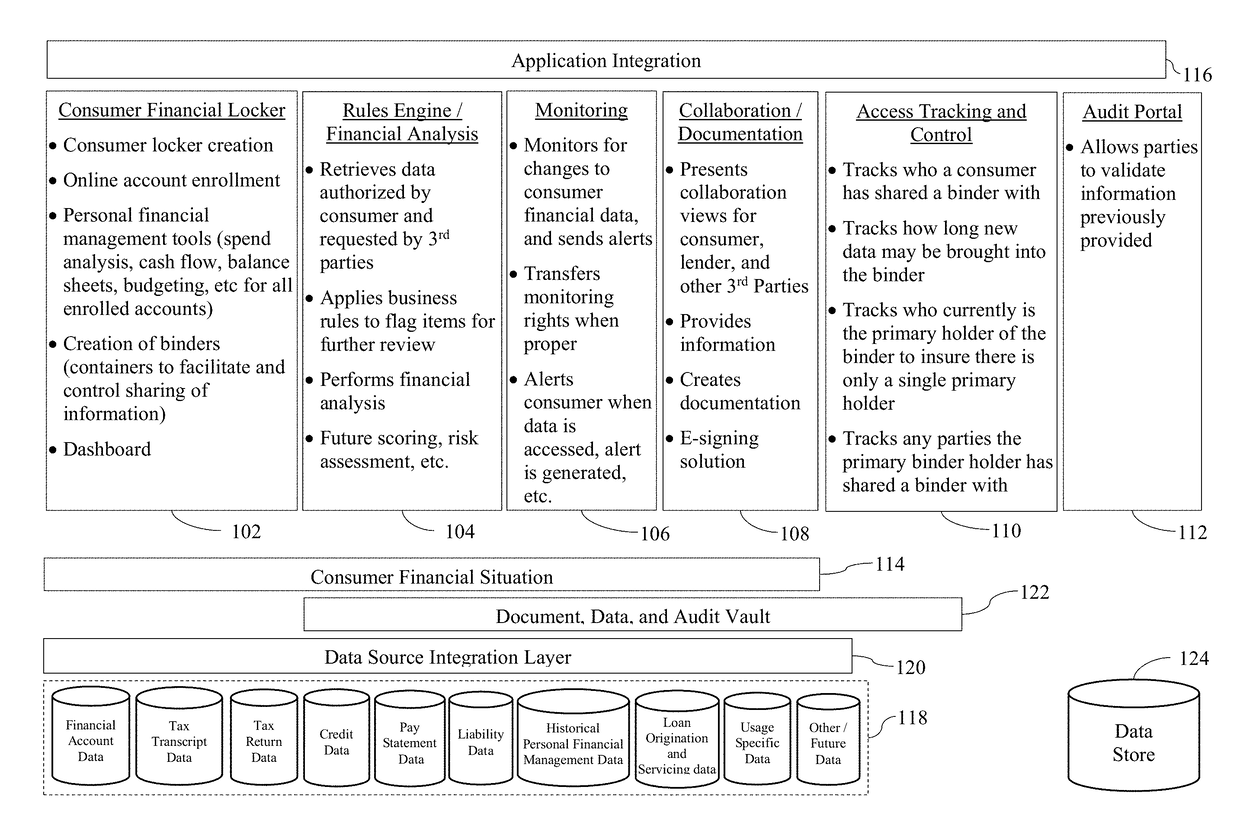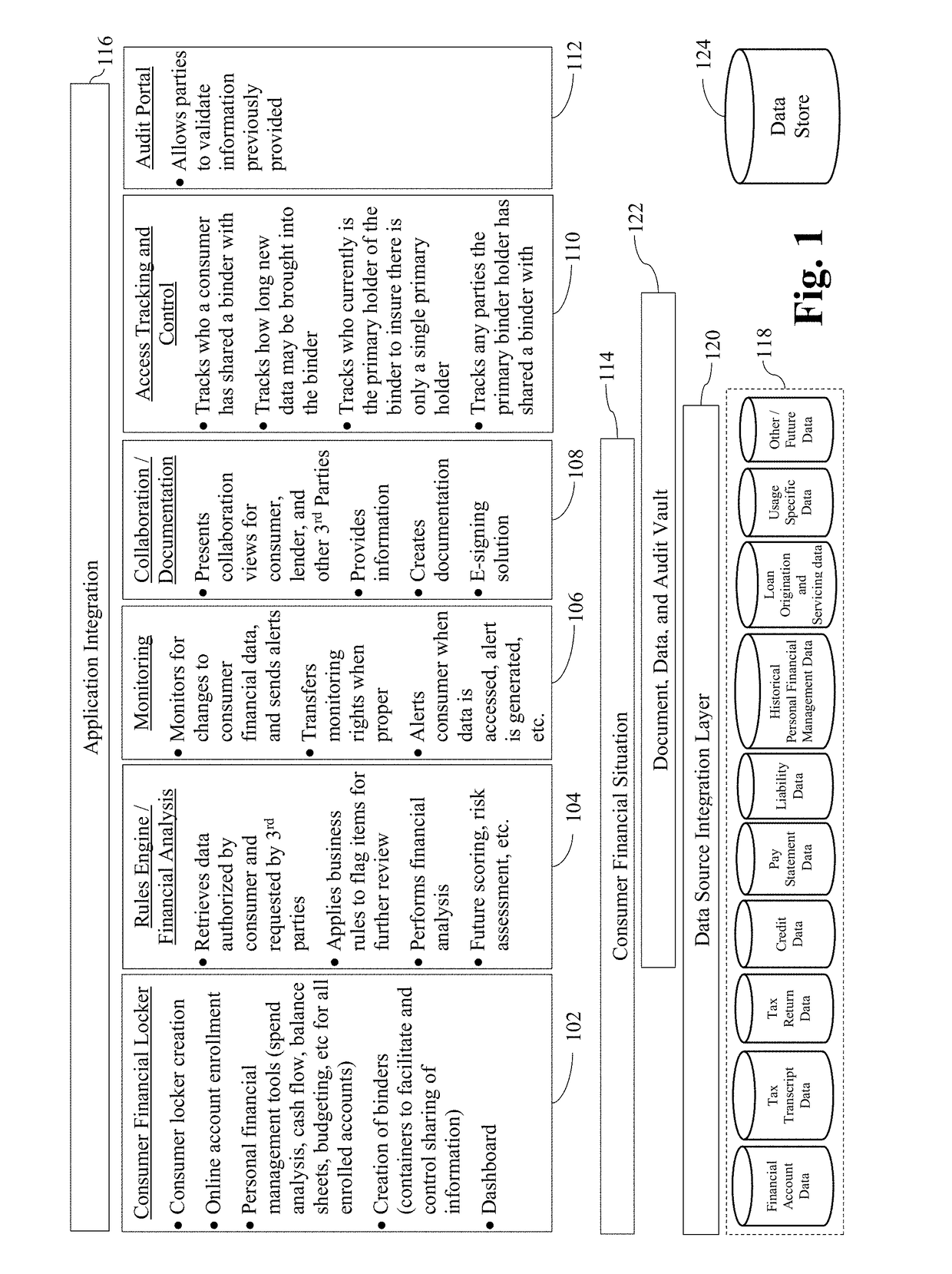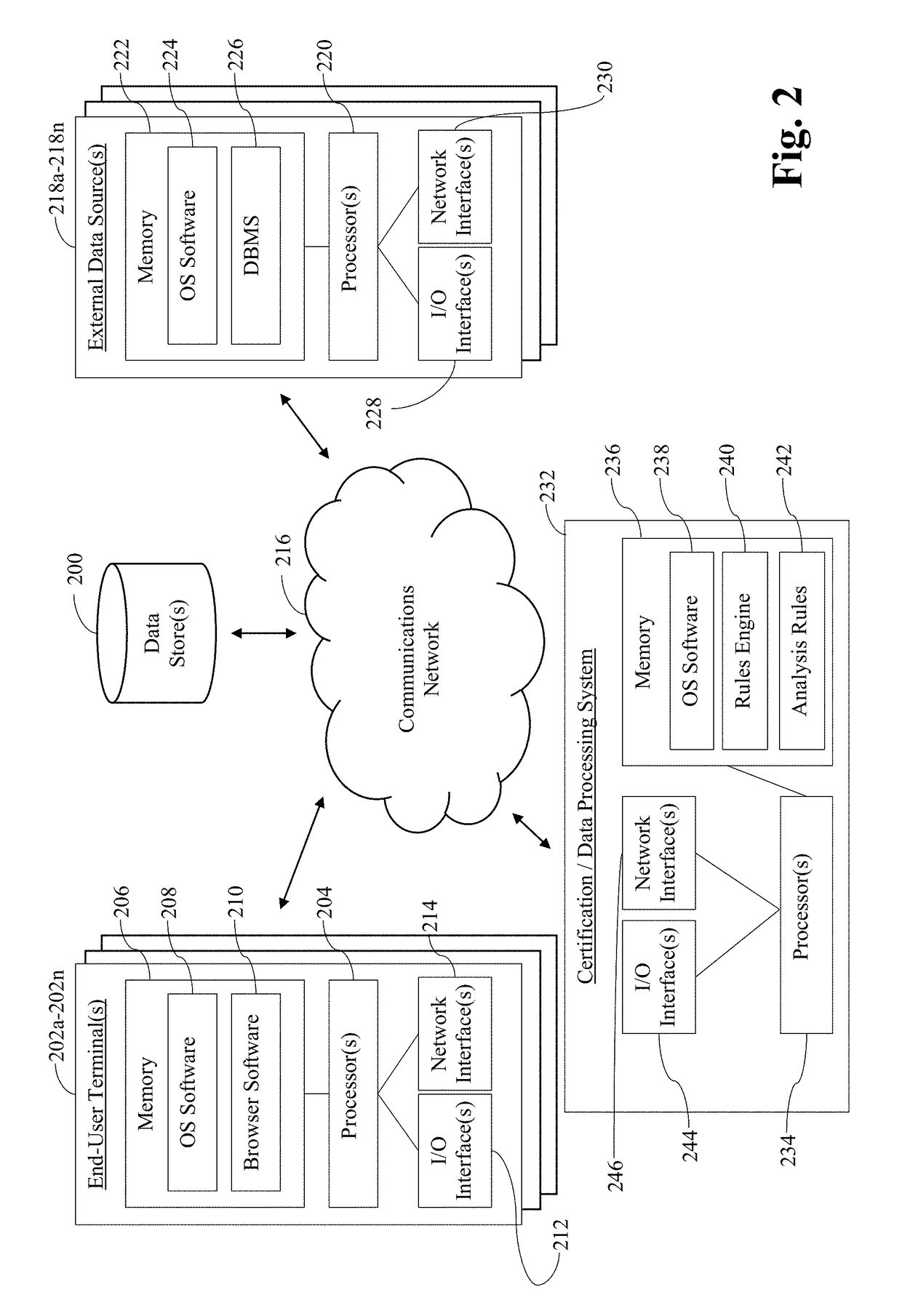Systems and/or methods for enabling cooperatively-completed rules-based data analytics of potentially sensitive data
a technology of cooperative completion and data analytics, applied in the field of systems and/or methods for enabling cooperative completion of rules-based data analytics of potentially sensitive data, can solve the problems of large number of manual tasks involved, inconvenient operation, and inability to accurately predict the effect of the actual process
- Summary
- Abstract
- Description
- Claims
- Application Information
AI Technical Summary
Benefits of technology
Problems solved by technology
Method used
Image
Examples
first example use case
[0060]A first example use case relates to a computer-implemented approach in which a consumer enrolls his / her financial accounts, stores financial data, and permits the sharing of such financial data with third parties of his / her choosing for a time period of his / her choosing, while providing traceability as to the source of the financial information to the third-parties. Elements of that information needing further review are identified, and a mechanism facilitating that review is provided. In this vein, a consumer creates a persistent account and enrolls one or more of their financial accounts. Information about the enrolled financial accounts, as well as any information the consumer uploads, is stored in the persistent account. A mechanism is provided to aid in retrieving historical data from the consumer's enrolled financial accounts and in periodically retrieving updated information from the consumer's financial account. This is done to create a repository for each of the consu...
second example use case
[0069]A second example use case relates to a computer-implemented approach in which a third party requests information from financial accounts, financial sub-accounts, and / or other data that the consumer has identified in a container that the third party (e.g., a party who the consumer has designated directly, or a party that has to some extent “stepped into the shoes of” such a party, e.g., through the sale of a mortgage, sharing with or the transference to a servicing entity, etc.) has access to in a manner which provides traceability as to the source of the information, while also identifying elements of that data that need further review and providing a mechanism to facilitate that review. In this regard, a request to access accounts and / or data identified in the container is received from the third party. A determination is made as to whether access to the container is appropriate, e.g., based on whether access was previously granted by or is currently being granted by the cons...
third example use case
[0071]A third example use case relates to a computer-implemented approach for monitoring (e.g., periodically, on demand, when issues are detected, etc.) data from the financial accounts, financial sub-accounts, and / or data a consumer has identified in a container that a party has access to, e.g., in a manner that provide complete traceability as to the source of the information and complete transparency to the consumer, while identifying elements of that data that need further review and providing a mechanism to facilitate that review. In this regard, a determination as to whether a party who has access to a container has identified that it wishes to monitor all components identified in the container, or just a subset of the accounts, sub-accounts, and / or data identified in the container. Access rights to the data are checked, e.g., as set forth above, and invalid requests may be removed from an automatic or periodic polling system and, depending on the configuration, the party who ...
PUM
 Login to View More
Login to View More Abstract
Description
Claims
Application Information
 Login to View More
Login to View More - R&D
- Intellectual Property
- Life Sciences
- Materials
- Tech Scout
- Unparalleled Data Quality
- Higher Quality Content
- 60% Fewer Hallucinations
Browse by: Latest US Patents, China's latest patents, Technical Efficacy Thesaurus, Application Domain, Technology Topic, Popular Technical Reports.
© 2025 PatSnap. All rights reserved.Legal|Privacy policy|Modern Slavery Act Transparency Statement|Sitemap|About US| Contact US: help@patsnap.com



